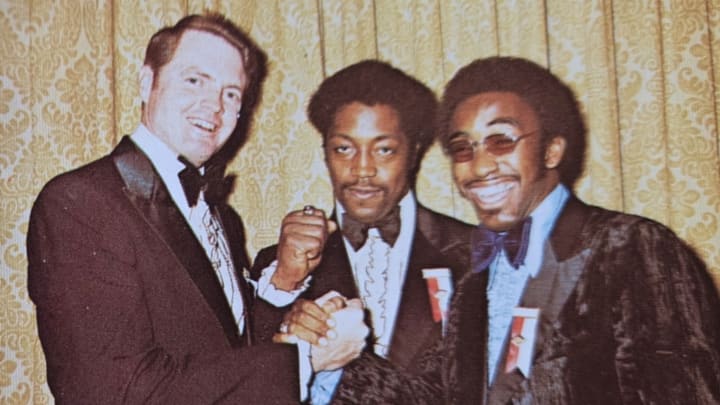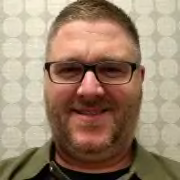When a Wealth of Husker Talent Wasn’t Enough

My piece on the Nebraska football GOAT got me thinking about the 1972 team. Two of the eight greatest players in school history - Johnny Rodgers and Rich Glover - were on that team.
And yet, the 1972 squad finished with a relatively disappointing 9-2-1 record.
It was hard for me to understand how a team could go 9-2-1 when they had:
- The Heisman Trophy winner, Johnny Rodgers.
- The third-place finisher in the Heisman voting, Rich Glover.
- The winner of the Outland & Lombardi trophies, Rich Glover.
- Four All-Americans (Glover, Rodgers, Willie Harper, and Daryl White).
- Seventeen players who have since been inducted to the Nebraska Football Hall of Fame.
So, I did what I always do when I have a question about Nebraska’s rich history: I headed straight for the HuskerMax archives, and down the rabbit hole I went.
To set the scene, Nebraska entered the 1972 season as the undisputed kings of college football. The Cornhuskers had won back-to-back national championships, with the 1971 squad widely considered as the greatest team of all time.
Nebraska lost several key players from those championship teams - Larry Jacobson, Jeff Kinney, Jerry Tagge, and five other players who earned All-Big 8 honors in 1971 - but still had a deep roster coming back for 1972.
A stunner in the Coliseum
In the 1972 season opener, #1 Nebraska travelled to Los Angeles to take on UCLA. It was the first time Nebraska opened on the road since 1967 (at Washington). The kickoff time (8:05 pm Pacific, 10:05 Central) is still the latest start time for a Husker game played in the continental United States.
The Bruins were led by new quarterback Mark Harmon (yes, the star of several TV shows) and they jumped out an early 10-0 lead. A Husker field goal by Rich Sanger and 11-yard run by Johnny Rodgers sent the teams to the locker room with a tie.
The teams traded touchdowns in the second half, but Nebraska's offense could not move the ball consistently. The Huskers were also hampered by five turnovers (three fumbles and two interceptions).
A late drive by the Bruins set up Efren Herrera's game-winning, 30-yard field goal with 22 seconds left.
It was Nebraska's first loss in 33 games, going back to the middle of the 1969 season. Nebraska also had its 23-game undefeated streak broken (dating back to a tie against USC early in 1970).
Absolute dominance
Following the loss, Nebraska fell to #10 in the AP poll. But the season was just getting started.
Nebraska bounced back in a big way with one of the most dominating stretches in school history. Look at these seven games:
- Beat Texas A&M 37-7
- Beat Army 77-7
- Beat Minnesota 49-0
- Beat Missouri 62-0
- Beat Kansas 56-0
- Beat Oklahoma State 34-0
- Beat Colorado 33-10
The 1972 team beat seven straight opponents by a combined score of 348-24. Throughout Nebraska's legendary history there have been a handful of seven-game stretches in a season - all in 1983, 1995, 1996, and 1997 - where Nebraska scored 348 points or more.
But none of those runs featured the defensive dominance shown in 1972. There is only one seven-game stretch in NU history where the Huskers scored more points and gave up less.
In the final five games of the 1910 season (under head coach W.C. "King" Cole) and the first two games of 1911 (under coach Ewald "Jumbo" Stiehm), the Huskers scored 358 points and did not allow a single point.
Nebraska was playing championship-caliber football for much of the season.
Tie-owa State
On Veterans Day 1972, the Huskers - back up to #3 in the AP - travelled to Ames to face #17 Iowa State.
It was a game full of mistakes and missed opportunities. The Huskers had eight turnovers* (six fumbles and two interceptions) in the game. Kicker Rich Sanger missed a PAT just before halftime, but NU went to the locker room leading 13-10.
*A Lincoln Journal-Star article about the game included a picture of a football with a handle attached to it. For the season, Nebraska turned the ball over 42 times (21 of each). Amazingly, the Blackshirts recovered 24 fumbles and intercepted 15 passes to make NU's turnover margin -3.
In the second half, Nebraska scraped its ineffective running game and quarterback Dave Humm threw a (then) school-record 42 passes. A Sanger field goal gave the Huskers a 23-16 lead with 1:03 left in the game. A victory would keep NU's three-peat hopes alive and give Bob Devaney his 100th win at Nebraska.
But the Cyclones quickly drove down the field, tying the game with a 24-yard touchdown pass with 23 seconds left. A successful PAT would defeat the Huskers and be one of the biggest upsets in Iowa State history. The Huskers pressured the kick, which sailed wide left.
Sooner Magic
After an easy 59-7 romp over Kansas State, #5 Nebraska closed out the regular season with a Thanksgiving Day game against #4 Oklahoma in Lincoln.
Midway through the third quarter, the Huskers led 14-0. But the Sooners - as they did so, so many times over the years - came roaring back. Oklahoma scored on a pair of 1-yard touchdown runs to tie the game early in the fourth quarter.
Dave Humm fumbled (one of six turnovers on the day), giving Oklahoma great field position at the Nebraska 27-yard line. The Blackshirts held the Sooners to two yards on three plays. But Rick Fulcher kicked a 41-yard field goal to give OU the lead.
The offense couldn't muster another scoring opportunity to give retiring coach Bob Devaney a win in his final home game.
Bowl Game Blowout
Nebraska fell to #9 after the OU loss, but still managed to get an Orange Bowl berth (Oklahoma accepted a bid to play Penn State in the Sugar Bowl). The Huskers were matched up against #12 Notre Dame, who came into the game with an 8-2 record.
Johnny Rodgers proved he was worthy of the Heisman Trophy with an epic performance. Shifting over to I-back from his usual wingback position, he ran for three scores, took a short pass 50 yards for a touchdown, and threw a 52-yard bomb to Frosty Anderson. This made Rodgers the first Husker to score a rushing, receiving, and passing touchdown in the same game. According to this video (voiced by John Facenda), Rodgers did it while still recovering from the flu, having lost 10 pounds the week of the game.
The Huskers led 40-0 after three quarters, with Notre Dame's lone score coming against the Husker reserves. Rodgers did not play in the fourth quarter either.
Epilogue
The 1972 Huskers finished with a 9-2-1 record, losing their two games by a total of six points. NU was ranked 4th in the final AP poll (9th in the UPI Coaches poll, conducted before the bowl games). Southern Cal won the national championship in 1972, finishing 12-0 with a 42-17 blowout of #3 Ohio State in the Rose Bowl.
Bob Devaney officially retired as Nebraska's head coach after the Orange Bowl and focused solely on his role as Athletic Director. His record in 11 seasons at NU was 101-20-2 (.829), winning or sharing the Big Eight title eight times, and winning two national championships.
He was replaced by his offensive coordinator, a guy from Hastings named Tom Osborne.
Stay up to date on all things Huskers by bookmarking Nebraska Cornhuskers On SI, following HuskerMax on X, and visiting HuskerMax.com daily.
